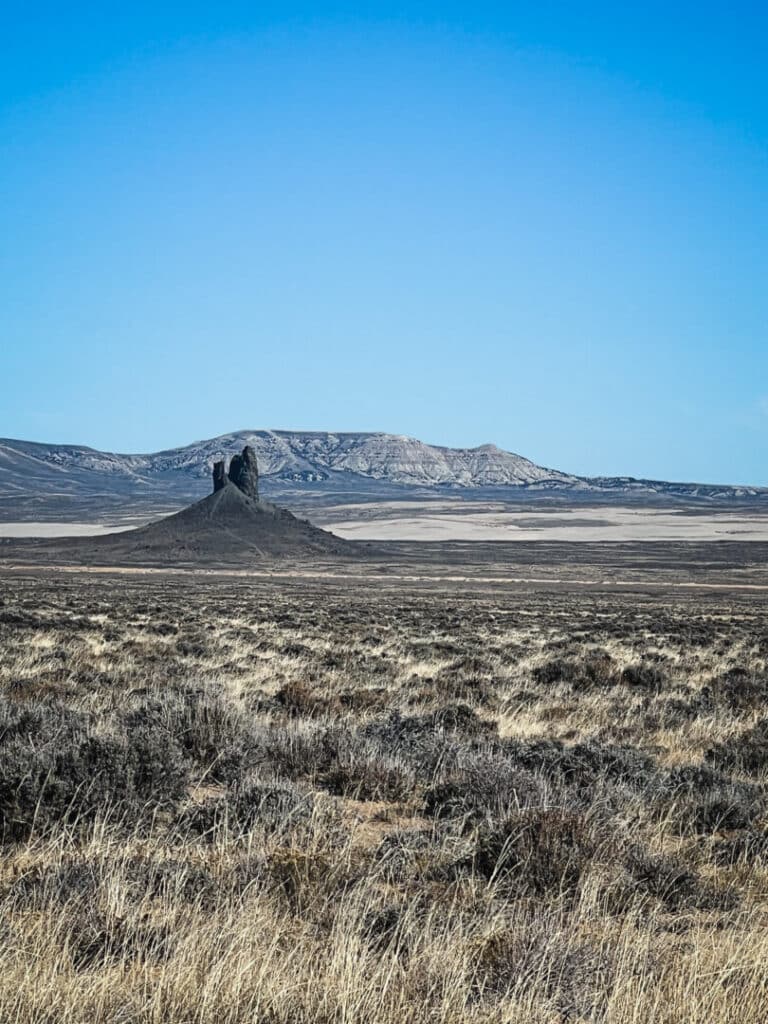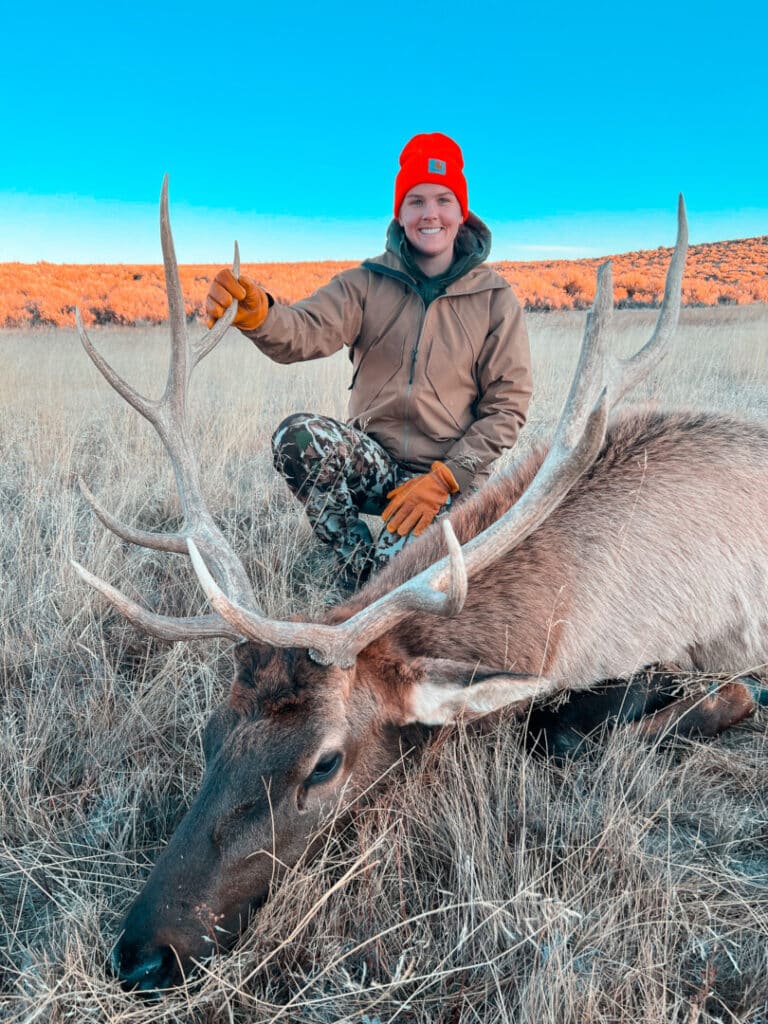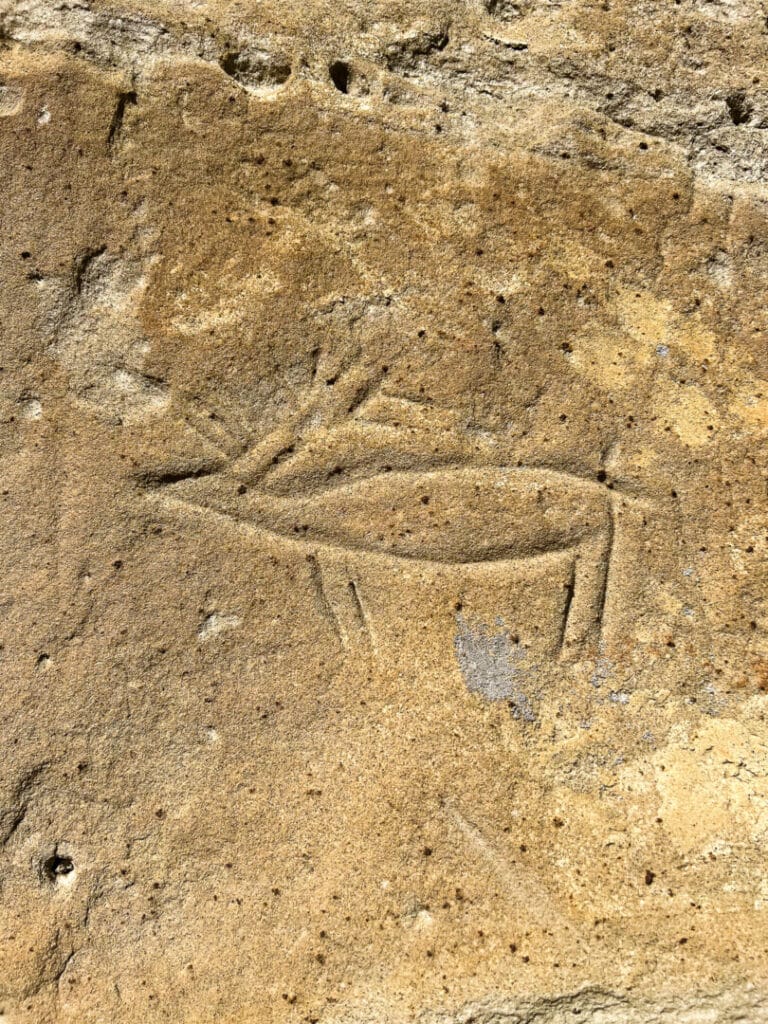What is it like learning to hunt elk in the wide, quiet, and mysterious Red Desert? Find out from hunter, Katherine Plunkett's 2022 experience she shared with the Wyoming Wildlife Federation.
What was it like learning to big game hunt this year?
It has been exciting, eye-opening, and very special to get into big game hunting this year. Having no experience hunting of my own, before meeting my husband, it has been a journey that we embarked on together. While hunting was never a family tradition growing up or a hobby of mine, my husband’s life has seemingly revolved around it since birth. He has anticipated the moment we could hunt together when I would be the one carrying the gun. When I finally put in for tags this year and ended up drawing the Red Desert Elk tag I knew it was going to be an exciting fall. Sharing this hunting season with someone so passionate about the sport made the experience even more special.
What were your expectations going out on the elk hunt this year?
I had heard a fair amount of hunting stories between my husband, co-workers, and friends, but I went into this elk hunt with very few expectations. A successful antelope hunt the month prior gave me the boost of confidence that I needed to go into the elk hunt, but I still was not sure if I would come out with an elk or not.
What is your greatest memory from the hunt?
The whole hunt will be a memory I will cherish forever- the joy and excitement of accomplishing the goal I set out to accomplish and having my husband as my constant supporter during the experience.
A specific, favorite memory happened right after I shot my elk. I watched in awe as the rest of the herd ran away and gracefully scaled the Killpecker Sand Dunes in the golden, early-morning light. The whole time we were in the Red Desert I had wondered to myself if the elk spent time on the dunes - it seems so unusual for an animal that is nowadays found amidst thick trees and mountains. That visual image is one I will never forget.

How did the hunt play out?
After being able to hunt and spend an extended period exploring the area, I have a much deeper appreciation for the Red Desert- not only for its size and vastness but also for the history of the area. I spent three days total hunting in the Red Desert. We started the hunt on a Friday near the Green River portion of the desert and saw only a handful of elk. After a stop for lunch at the Farson Mercantile, we decided to head for the Tri-Territory area – I had heard this could be a good area from a friend at work. The remainder of that afternoon was spent searching for elk and I quickly learned that seeing an elk through the binoculars did not mean that we could always get there before the elk decided to move. Although it might’ve looked flat and easily traversed, the vastness of the terrain was not easily conveyed through the lens of a binocular.
We were heading toward Rock Springs to stay for the night and 20 minutes before the sun set we came across hope for the hunt. A bull elk was emerging from a sage draw into a meadow. We sat and watched in amazement while four other bulls trailed along. We quickly realized that making a move on those elk with limited time left in the day was not possible. Though, this sight

ing was enough to spur a plan for the rest of the trip. The next morning we got up early to hopefully catch an elk further into the draw. That next morning we did see one elk, but I couldn’t get to it in time so we used the time to scout the land. It was amazing to walk through that draw and see all the elk signs- their trails, droppings, and to smell their scent. It was neat to trace their trails and try to decide where they came from and where they might be heading. I then decided that that night we would return before sunset and wait for them.
This day of waiting gave us time to glass for more elk and explore the land. We visited the local petroglyphs, saw the Boar’s Tusk from all angles, and were amazed by the Sand Dunes in the middle of Wyoming. It was incredible to be able to spot a herd of elk moving across the desert from miles away and then be able to track them down. I did stalk another herd with some smaller bulls, but ultimately had such a good feeling about that draw we found that I wanted to wait and see how it panned out.

That evening, I insisted we get to the draw 2 hours before last light. I wanted to make sure I could get set up, feel comfortable, and that we wouldn’t disturb the elk moving into the spot. The anticipation and quietness of that time was unforgettable. As dusk neared and no elk were spotted I decided that the next morning would be our last hunt of the weekend and we would again return to that draw.
The following morning we returned to our draw, planning to move in from the opposite side. I was surprised to finally spot the herd quite a bit further into the draw than we expected. I was able to get situated and close enough to feel comfortable to make a successful shot. The elk ended up in a patch of tall grass and it was a beautiful sunny morning. I felt so grateful and relieved that the hunt had ended in such a perfect way!
Between the native petroglyphs and old ranching homesteads, it was evident that there is so much human history in the wide, quiet, and mysterious desert. During the quiet moments hunting, I couldn’t help but imagine what the Red Desert would’ve been like in the distant past. I feel so grateful to have had the opportunity to hunt the Red Desert and have spent that special time getting to know the land.
About the Author: Katherine Plunkett is a pharmacist on the Wind River Indian Reservation who calls Lander, WY home.

